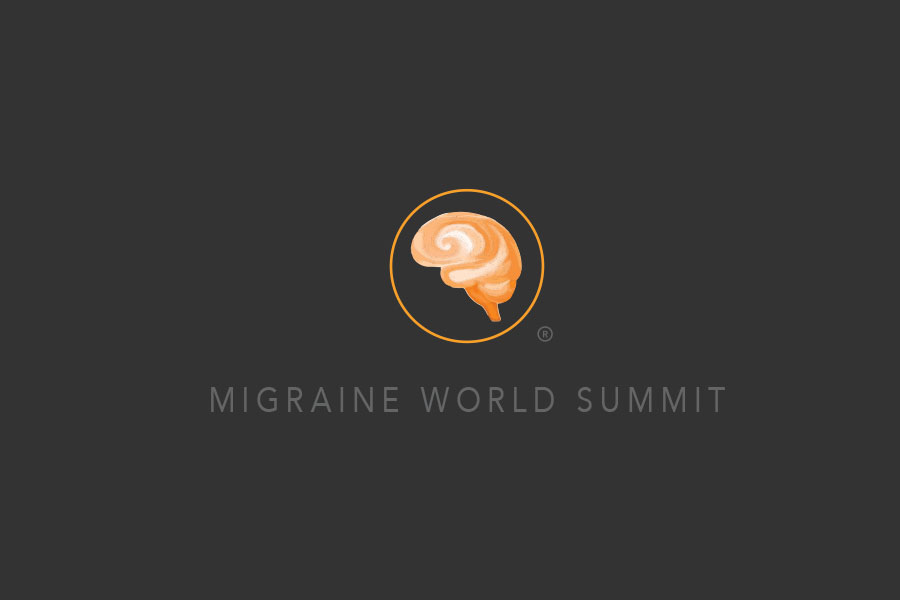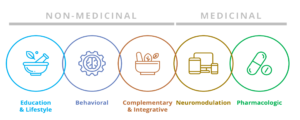Carl Cincinnato
Medical marijuana legislation is sweeping the United States and the world, making this a viable legal option for people in pain. Meanwhile, people with migraine need to know, “Are there legitimate medicinal applications for cannabis?” Australia, Canada, and over half the states in the US and Europe now have legalized medicinal cannabis.
We were fortunate to have the opportunity to visit with one of the top experts on marijuana for migraine, Dr. Eric Baron, DO, to help us understand these new options for pain relief. Dr. Baron is a staff board-certified neurologist and a headache-medicine diplomat for the United Council for Neurologic Subspecialities at Cleveland Clinic Neurological Institute, Center for Neurological Restoration – Headache and Chronic Pain Medicine in Cleveland. He has been named one of America’s top physicians for several years and has authored many publications across a broad range of headache and migraine topics.
What is CBD and THC?
Dr. Baron: “Marijuana, in general, refers to cannabis strains that are generally more intoxicating; psychoactive. They have high levels of THC, which is the cannabinoid that gets you high and causes the psychoactive effects. Those strains are generally referred to as marijuana. CBD is another very common cannabinoid in cannabis, and CBD, as opposed to THC, has no psychoactive effects. So there is no high with it. CBD is a strong anti-inflammatory. It’s about several hundred times more anti-inflammatory than aspirin and it also has some analgesic pain relieving benefits, as well. THC is about 20 times more anti-inflammatory than aspirin and about twice as anti-inflammatory as hydrocortisone. So, there’s certainly some benefits as far as anti-inflammatory and pain benefit in both of these. In November of 2017, the World Health Organization put out a statement that CBD exhibits no concern for abuse; dependence; no concern for public health issues. And, in January of this year, the World Anti-Doping Agency has removed CBD from its prohibited list of substances, allowing athletes to now use these.
Are there legitimate therapeutic or health benefits of cannabis?
Dr. Baron: “Most of what we have right now is based on case reports, case series, and surveys. There have been a couple of small studies prospectively done and there was a large retrospective study, which means you look back at charts and review. The large study looked at about 121 patients in Colorado-based medical marijuana clinics and they were looking specifically at migraine patients who had been referred there for cannabis use for their migraine. They compared the ratio of migraine attacks at the initial visit versus a follow-up visit. They found that the frequency of attacks dropped from about 10.4 to 4.6 with the use of cannabis, and about 85 percent of those patients reported a drop in their frequency.
There is also a publication that came out by the National Academies of Sciences, Engineering, and Medicine in January of 2017, and they looked at a wide array of studies and trials and they came up with a conclusion of 100 different points. They concluded that there was definitive and substantial evidence for the use in chronic pain in adults for nausea/vomiting related to chemotherapy use, for patient-reported MS spasticity and for pain symptoms. Those are the defined uses that have the most evidence for them. There has been a wide array of other symptoms reported to benefit, but a lot of this just requires scientific proof at this point.”
What obstacles are there for doing research on cannabis use for migraine and what can individuals do to help remove these obstacles?
Dr. Baron: “The biggest obstacle really has been the fact that marijuana is a Schedule I substance. What this means is that the Drug Enforcement Agency, the DEA, claims there are no medicinal uses for it, and we’ve been unable to get it off of Schedule I status. If we can reschedule it to Schedule II, this opens up a lot more research opportunity and makes it a lot easier to do those things.
I think the key is just advocacy at the local level and local governments, and bringing your case to local lawmakers and explaining what your reasoning is. Perhaps showing them some of the evidence that’s out there. And once you can convince them, then they can start to make changes locally, and I think that’s really where it starts.”
Watch the full interview to find out:
Why are governments and health regulators changing laws and legalizing marijuana?
If marijuana has a legitimate role in medicine, why has it been illegal for so long?
What is cannabis? How is it different or similar to marijuana?
What are endocannabinoids?
What are common strains of cannabis?
How might cannabis address migraine symptoms or comorbidities (nausea/vomiting, etc.)?
Which strains or formulations of medical cannabis seem to be the most effective for migraine relief?
How is medical cannabis different to “street” cannabis?
What risks are involved?
What should we expect in the future?
Watch Dr. Eric Baron’s interview preview here or order it as part of the Migraine World Summit package from this page >>
If you previously purchased the 2019 Migraine World Summit, you are all set to login to watch the full interview.
Posted in: Migraine Education





